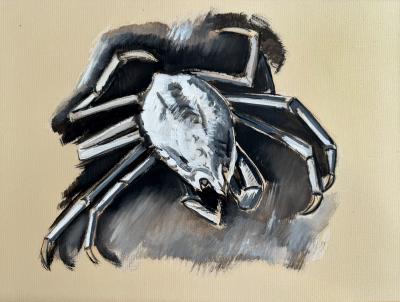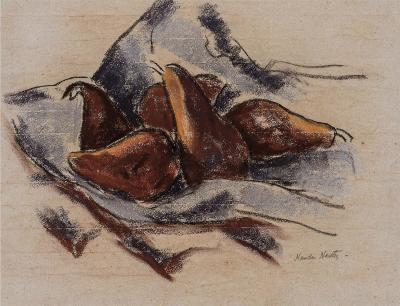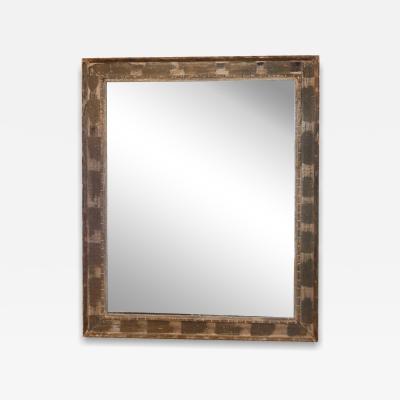Marsden Hartley
American, 1877 - 1943
Marsden Hartley (1877–1943) was a pioneering American modernist known for his bold, expressive style and deeply personal approach to landscape and symbolism. Born in Lewiston, Maine, Hartley began his formal art education at the Cleveland School of Art at age 15 and later studied at New York's Chase School, the National Academy of Design, and the Art Students League. In 1909, he gained national attention with his first solo exhibition at Gallery 291, run by Alfred Stieglitz, which introduced him to a network of modernist artists including Georgia O’Keeffe, Arthur Dove, and John Marin.
Throughout his career, Hartley maintained a strong connection to the rugged landscapes of Maine, often painting monumental natural forms such as mountains and clouds with striking color and simplified shapes. His time in Europe, particularly in Paris and Berlin from 1912 to 1915, exposed him to emerging modernist movements, especially German Expressionism. There, he produced some of his most iconic works, including the German Officer Portraits, which blended abstraction, military symbolism, and personal loss into a singular visual language.
In the years following World War I, Hartley continued to explore American themes, drawing inspiration from Native American artifacts, the Southwest, and later, the fishing villages of Nova Scotia and the coastlines of his home state. His time in Taos, New Mexico, and travels through Mexico and Europe informed a dynamic evolution in his style—from expressionist abstraction to more representational forms—while maintaining his characteristic intensity and emotional depth.
In his final years, Hartley returned to Maine, declaring it his spiritual and artistic home. His later works, filled with thick, textured brushstrokes and bold color fields, solidified his place as one of the most original and influential voices in American art. Today, Marsden Hartley is celebrated for his contribution to early 20th-century modernism and his uniquely American vision shaped by personal experience, regional identity, and global artistic exchange.
Throughout his career, Hartley maintained a strong connection to the rugged landscapes of Maine, often painting monumental natural forms such as mountains and clouds with striking color and simplified shapes. His time in Europe, particularly in Paris and Berlin from 1912 to 1915, exposed him to emerging modernist movements, especially German Expressionism. There, he produced some of his most iconic works, including the German Officer Portraits, which blended abstraction, military symbolism, and personal loss into a singular visual language.
In the years following World War I, Hartley continued to explore American themes, drawing inspiration from Native American artifacts, the Southwest, and later, the fishing villages of Nova Scotia and the coastlines of his home state. His time in Taos, New Mexico, and travels through Mexico and Europe informed a dynamic evolution in his style—from expressionist abstraction to more representational forms—while maintaining his characteristic intensity and emotional depth.
In his final years, Hartley returned to Maine, declaring it his spiritual and artistic home. His later works, filled with thick, textured brushstrokes and bold color fields, solidified his place as one of the most original and influential voices in American art. Today, Marsden Hartley is celebrated for his contribution to early 20th-century modernism and his uniquely American vision shaped by personal experience, regional identity, and global artistic exchange.
